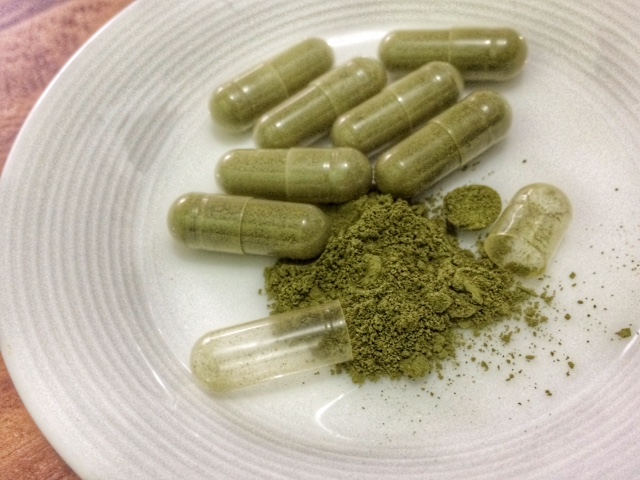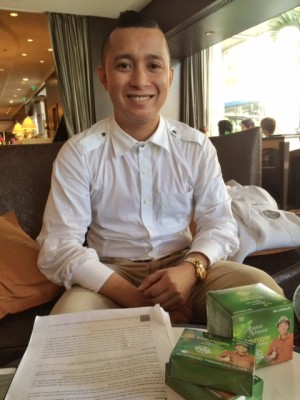
A recent study has confirmed that diabetic patients may benefit from regular intake of capsules containing Moringa oleifera (malunggay) leaves. The study says that malunggay not only reduces blood sugar levels, but also lowers the risks of stroke and heart attack.
High blood sugar reading is just the tip of the “metabolic syndrome” iceberg associated with diabetes.
Less attention has been given to the diabetic’s chronic inflammatory state. That’s why even with controlled sugar, many diabetic patients suffer the high risks of stroke and heart attack.
Almost every modern disease is caused or affected by inflammation. It is the normal response of the immune system to infection and trauma. In diabetic patients, this defense system becomes impaired and, if left untreated, can compromise the integrity of the blood vessels, dramatically increasing the risks of stroke and heart attack.
12-week study
In the first cohort study of M. oleifera on humans performed by Dr. Rainier Nery Mozo, with Dr. Imelda Caole-Ang as adviser, the leaves of this wispy tree were studied specifically for their properties affecting the hs-CRP (high specific C-reactive protein), a strong predictor of cardiovascular risks and death produced by the liver when there is inflammation, and hemoglobin A1c, the standard test that determines the past three months’ blood sugar control in people with diabetes.
The 12-week study, conducted November last year and peer-reviewed by the Philippine Internal Medicine Journal, supervised 52 selected subjects, all diagnosed with diabetes mellitus Type I or II. Patients with existing conditions related to inflammation other than diabetes were excluded.
“According to our study, even with controlled blood sugar levels, our patients still showed inflammation above the normal level. This increases their risk of getting a stroke or heart attack. They rely only on hemoglobin A1c tests. They haven’t had their hs-CRP checked,” Mozo told Inquirer Lifestyle.
The study, titled “The Effects of Malunggay (Moringa oleifera) leaves capsule supplements on High Specificity C-Reactive Protein (hsCRP) and Hemoglobin A1c (HgbA1c) Levels of Diabetic Patients,” does not just introduce malunggay capsule as supplement, but also suggests the need for hs-CRP to become a standard test.
Among diabetes’ deadly comorbidities are hypertension, dysregulation or build-up of cholesterol, and impairment in fibrinolysis that leads to blood thickening.
The study was funded in part by the Philippine College of Physicians-Manila Chapter and Atienza Naturale Malunggay Capsule, which provided the supplements. Mozo also spent his own money on the study.
For three weeks, all 52 patients took the supplements three times a day alongside their maintenance medicine.
Dubbed “the wonder gulay,” malunggay leaves have been characterized by Trees for Life, the charity that works to restore the forest, to “contain more vitamin A than carrots, more calcium than milk, more iron than spinach, more vitamin C than oranges and more potassium than bananas.” It also noted that the quality of its protein rivals that of milk and egg.
“Why leaves? According to a phytochemical screening, the leaves have the most active ingredients compared to any other part of the plant such as the bark or root. The leaf extract as medicinal component appears to have the most level of all bioactives of interest,” Mozo said.

According to the American Heart Association, hs-CRP of less than 1 milligram per liter poses a low risk for stroke and heart attack. Moderate risk is involved for readings of 1-3, and high risk for 3-10.
Dropped
While all patients, on their first day, already showed controlled blood sugar, averaging a hemoglobin A1c count at 6.96 (a diabetic patient must aim for 7, Mozo said, while the norm for a nondiabetic is 6.5), they also showed a high risk of stroke and heart attack. Their hs-CRP averaged at 3.38.
After 12 weeks, the average hemoglobin A1c dropped to 6.06, and the hs-CRP down to 1.69 or moderate risk.
“The .6-percent drop in hemoglobin A1c might look insignificant to the layman, but for a doctor, a 1-percent drop reduces the risk of microvascular complications such as stroke, eye blindness and heart attack by 40 percent, and death by 21 percent,” Mozo said.
Patients can, of course, opt for another brand, he noted.
What’s important is for the capsule to contain the same quality of leaves. This means they should be processed in a way approved by the Department of Science and Technology (dry-air processed), and containing the same dosage (500 mg), he said. Check that the leaves inside the capsule are still green.
“Processing of leaves keeps most of the nutrients intact. It’s easy to say it contains 500 mg of leaves, but you wouldn’t know if there are still nutrients left in there. DOST made a protocol for how to process malunggay leaves. They should still be green, not brown,” he said.
A 500-mg capsule contains an equivalent of two-and-a-half cups of malunggay leaves. Consumption of the supplement is relatively safe and has no known side effects. But since it contains a high amount of potassium, Mozo advises that patients with kidney problems must consult with their physicians first.
“This is just the beginning. What we should do next is conduct a randomized control study with bigger population size to further demonstrate the effect of malunggay capsules on hs-CRP and hemoglobin A1c,” Mozo said.
Mozo will present his study in Hong Kong this September. He has also been invited to present it in Austria, Japan and Korea, but may have to forego those due to budget constraints.












































